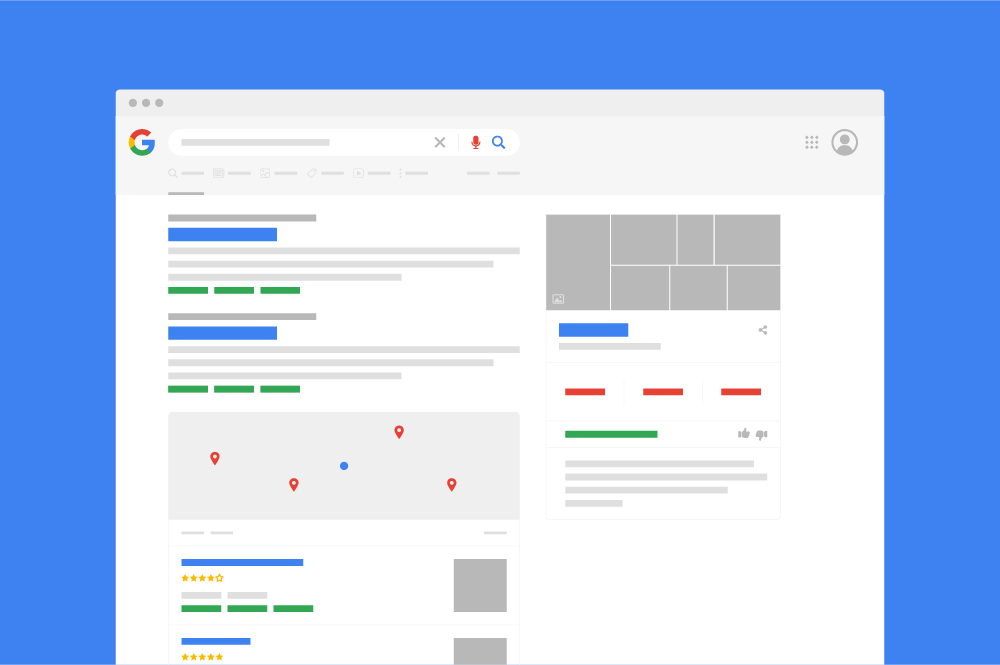Whether you’re new to content marketing or have been using the same methods for a while, it’s always a good idea to review your content strategy. You want to make sure it’s up-to-date, creative, and interesting for your potential customers, no matter how they plan to make a purchase.
If you’re struggling with planning for the upcoming year or need new ideas for your plan, keep reading.
In this article, we’ll explain what a content strategy is, why your business needs one, and the important steps you should take to create your own strategy.
What Is a Content Strategy?
Content strategy is all about planning, creating, publishing, managing, and controlling content. When done well, it can grab the attention of a specific group of people and help achieve business goals.
For example, let’s say your business wants to be more well-known. You can use a content strategy that focuses on search engine optimization (SEO) to make your website show up more often in search results. This will bring more people to your products or services.

Some new business owners might think that a content strategy is not important when starting out. But creating high-quality content is actually really valuable for building trust with new audiences and ensuring long-term success.
In simple terms, a good content strategy is the foundation for attracting and pleasing potential customers as they go through the process of buying things. It’s part of a bigger marketing approach called inbound marketing. A content strategy can also help with selling and making customers happy.
Why Marketers Need To Focus On Creating A Content Strategy
Content marketing is really important for businesses because it helps them drive traffic to their websites and get new customers without spending too much money.
Think about writing a blog post that keeps getting visitors even after you publish it. Inside that post, you can put a link to an ebook or a free tool. That link will keep bringing in new potential customers for your business for a long time.
The steady flow of traffic and new customers that come from your evergreen content gives you the freedom to try out other ways of making money, like sponsored content, advertising on social media, and sharing your content in different places.
And here’s the best part: your content does two things at once. It brings in new customers, and it also teaches them things, and makes more people aware of your brand.
How To Create A Good Content Strategy
Now, let’s explore how to create a content marketing plan in more detail. By following the steps listed below you can begin to craft your own killer content strategy:
- Set Your Goal
- Understand Your Target Audience
- Review Your Existing Content
- Choose a System To Manage Your Content
- Decide What Type of Content You Want To Create
- Generate ideas For Your Content
- Publish and Manage Your Content
1. Define Your Goals

Why do you want to create a content marketing plan? What is your purpose or motivation for producing content through this plan?
These questions are essential when developing a content strategy. Take a closer look at your overall business goals, review notes from meetings and input from your team, and conduct some research on your own to ensure that your goals are strong and lasting.
Once you have a list of goals, prioritize them based on their importance. This will help you determine which parts of your strategy need immediate attention and which ones can be addressed later. It will also assist you in making decisions about allocating resources as you move forward.
2. Understand Your Target Audience
To create a good plan, it’s important to know who you are trying to reach with your content. This group of people is often called the “buyer persona.” This step is crucial when you’re planning your content strategy.
For people who are new to marketing, understanding your target audience is especially important. By figuring out who your audience is, you can create content that is very relevant and valuable to them. This increases the chances that they will engage with your content and become customers.
Start by collecting data and analyzing it to find patterns. If you haven’t already figured out your buyer personas, you need to look at your data to decide who you want to create content for and what kind of content they like. This article has useful information on using data to create buyer personas.
When analyzing the data, look for similarities among your potential customers based on things like their contact information and demographics. Then, study these groups closely to find more similarities.
Use the information you gather to refine your buyer personas. If you’re an experienced marketer, your target audience might have changed over time. Think about whether you want to target a new group of people or expand your current market. You can also choose to stick with your current audience.

It’s important to regularly update your understanding of your audience by doing market research every year. Also, carefully looking at your current customers can help you improve your buyer personas.
3. Preform a Content Audit
In the beginning, many brands start their content marketing journey by writing blog posts or posting on social media. But if you want to try different types of content, it can be very helpful to do a thorough check of all your content. This check lets you see how well your content is doing, both the ones that are doing really well and the ones that are not doing so well.
If your business has been around for a while, it’s important to review your content marketing efforts and see how they did in the past year.
Find areas that need improvement and where you have gaps in your content. When you review your content, make sure to write down the titles of your pages, the types of content you have, how long they are, and a short summary of each piece. This will help you see what parts need to be better and what topics you haven’t covered yet.
Look at the quality and relevance of your content. See if it matches what your audience cares about the most. Use this information to decide what kind of content you should make in the future.
Find ways to use your content in different ways. For example, you can turn your popular blog posts into videos for YouTube, eBooks, or even start a podcast based on that content.
Think about how your team works on content. How you work together affects how many ideas you have, how well you create content, and how good it is. See if you have a good way of working or if you mostly just do things the way you always have. If you find any problems or things that can be done better, fixing them can help you make better content in the future.
Use what you find in the content check to make things better and set new goals for the next year. This is also a good time to make sure your team’s goals match the goals of your whole organization.
No matter what stage you’re at, doing a content check can help you see what your audience likes, find topics you haven’t covered, and come up with new ideas for content.
4. Decide On a Content Management System

Content management involves creating, publishing, and analyzing content. To make it easier and more organized, you can use a Content Management System (CMS).
To find the right CMS for your team, start by discussing your team’s needs and processes. Then, research different CMS options to see which one has the features you need. Look for a CMS that is easy to use, can be customized, has good security measures, and fits your budget.
Two popular CMS options are HubSpot CMS and WordPress. HubSpot CMS is an all-in-one platform where you can plan, create, publish, and measure your content. WordPress is widely used and can be enhanced with the HubSpot WordPress plugin, which adds more features like web forms, live chat, CRM access, email marketing, and analytics. You can also check this list of top CMS options to compare different tools.

Once you choose a CMS, it’s important to establish a content governance model. This model helps you manage content creation, publication, and maintenance according to your business standards and policies. It ensures that all content meets your quality and consistency requirements. As your content grows, the content governance model helps you update and remove outdated content.
By following these practices, you can effectively use your CMS, manage your content efficiently, and maintain the quality and consistency of your content over time.
5. Decide What Type of Content You Want To Create
There are many different types of content you can create, like written materials (ebooks, blog posts) and audio content (podcasts). Creating a good content strategy involves making decisions, analyzing data, and taking calculated risks.
Start by understanding the people you want to reach and their goals. Each person may need different types of content. Think about what actions you want them to take and choose the content formats that best suit those goals.
For example, if you’re deciding between starting a blog or launching a podcast, consider what you want to achieve. Blogs are good for getting people to take action, while podcasts help raise awareness of your brand. Let your goals and target audience guide your choice.
Next, think about the resources you have for creating content. Consider the size of your team, how much time they can spend on content creation, their skills, and your budget. This will help you focus on what you can realistically do and develop a sustainable content strategy.
Once you have a clear understanding of your goals and resources, choose a limited number of main topics for your content. Then, based on your target audience and topic choices, decide on the specific formats and channels you’ll use to reach them.
For example, if your team wants to start a video channel but doesn’t have much experience in video production, you could create shorter videos instead. But if the most popular content in your chosen topic is long-form videos or podcasts, you need to think carefully. Should you try to stand out with a different format, or should you get help to create content that can compete with what’s already out there?
Once you’ve made these important decisions, you can start working on the details and execute your content strategy.
6. Generate ideas For Your Content
Use the information you gathered from your content audit, persona research, and goals to make smart decisions about your content strategy. After brainstorming, refine and prioritize your ideas. During brainstorming, let your ideas flow without worrying about structure. Explore even the craziest ideas and see where they take you.
Group your ideas based on goals, topics, or personas. Then, go into each idea in more detail, adding specific information and doing keyword research when needed.
Creating a content workflow can help you refine your ideas. This approach helps you rank and organize your ideas effectively, setting the stage for successful content creation.
7. Publish and Manage Your Content
Go beyond simply deciding on the types of content you’ll create and take the time to organize your content effectively as part of your marketing plan.
Start by creating a comprehensive content calendar. An editorial calendar helps you structure and diversify your content library on your website. Additionally, consider developing a social media content calendar to promote and manage your content across different platforms.
To maximize the reach of your content, focus not only on evergreen topics but also on timely and relevant ones. Incorporating niche holidays or events can generate spikes in traffic. You can find inspiration for these niche holidays in the ultimate list of social media holidays.
Optimize your content for maximum impact by using effective SEO tactics, promoting it across different channels, and tailoring it for specific platforms like social media.
Monitoring and analyzing your content’s performance is crucial. Identify key performance indicators (KPIs) like traffic, engagement, lead generation, and conversion rates to assess your content’s success. Each channel may have different relevant KPIs, so use appropriate resources to determine them.
Once you have the data, revise your content strategy based on data-driven insights. Don’t just collect and review the data; use it to refine your strategy. Evaluate the effectiveness of your chosen KPIs, conduct marketing experiments, and make adjustments based on the insights you gain.
Using data-driven insights can also help you make a strong case to stakeholders when proposing new and potentially risky ideas for your content strategy. Concrete evidence from your data analysis can support your ideas and decisions.
Wrap Up
Developing a content strategy is a crucial step for any business or individual looking to make an impact online. It serves as the roadmap that guides your content creation efforts, ensuring that you are delivering the right message to the right audience at the right time.
Remember to prioritize quality over quantity and focus on providing value to your audience. Consistency is also key, so establish a realistic publishing schedule that allows you to consistently produce high-quality content.
Regularly analyze and measure the performance of your content strategy to identify what is working and what needs improvement. Use analytics tools and gather feedback from your audience to make informed decisions and optimize your content over time.




How To Develop A Content Strategy